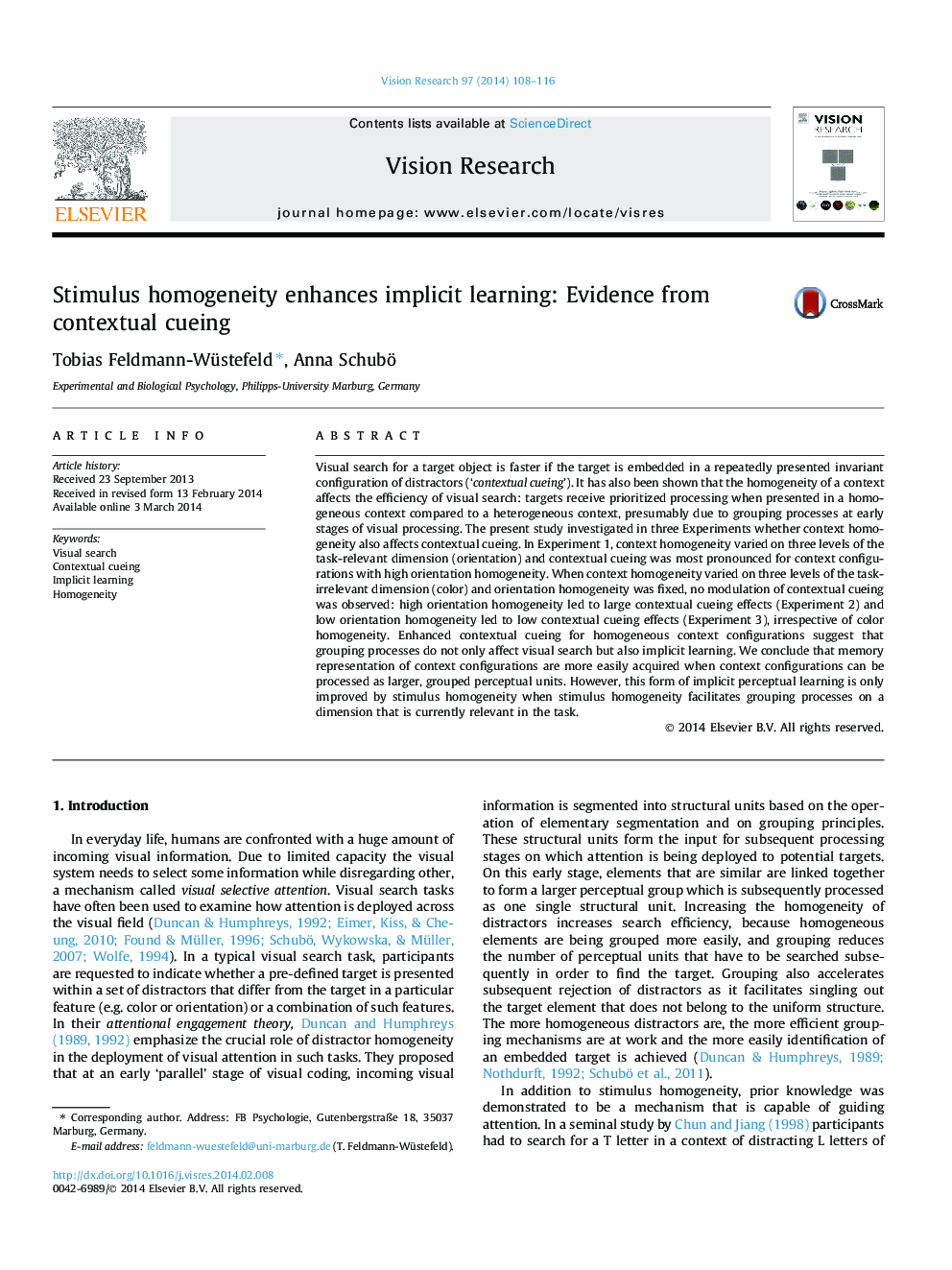| Article ID | Journal | Published Year | Pages | File Type |
|---|---|---|---|---|
| 6203552 | Vision Research | 2014 | 9 Pages |
â¢Distractor homogeneity improves detection of a target in a visual search task.â¢How does homogeneity affect implicit learning as evident in contextual cueing?.â¢Results: Contextual cueing were enhanced for homogeneous contexts.â¢This was only true if distractors were homogeneous on a task-relevant dimension.â¢We conclude that implicit learning can benefit from grouping processes.
Visual search for a target object is faster if the target is embedded in a repeatedly presented invariant configuration of distractors ('contextual cueing'). It has also been shown that the homogeneity of a context affects the efficiency of visual search: targets receive prioritized processing when presented in a homogeneous context compared to a heterogeneous context, presumably due to grouping processes at early stages of visual processing. The present study investigated in three Experiments whether context homogeneity also affects contextual cueing. In Experiment 1, context homogeneity varied on three levels of the task-relevant dimension (orientation) and contextual cueing was most pronounced for context configurations with high orientation homogeneity. When context homogeneity varied on three levels of the task-irrelevant dimension (color) and orientation homogeneity was fixed, no modulation of contextual cueing was observed: high orientation homogeneity led to large contextual cueing effects (Experiment 2) and low orientation homogeneity led to low contextual cueing effects (Experiment 3), irrespective of color homogeneity. Enhanced contextual cueing for homogeneous context configurations suggest that grouping processes do not only affect visual search but also implicit learning. We conclude that memory representation of context configurations are more easily acquired when context configurations can be processed as larger, grouped perceptual units. However, this form of implicit perceptual learning is only improved by stimulus homogeneity when stimulus homogeneity facilitates grouping processes on a dimension that is currently relevant in the task.
